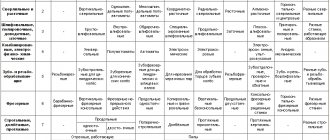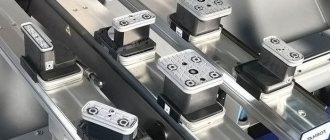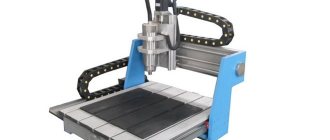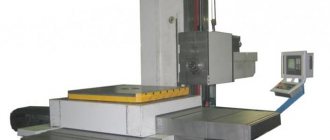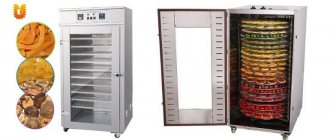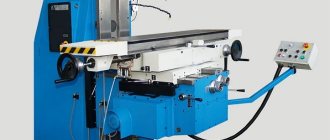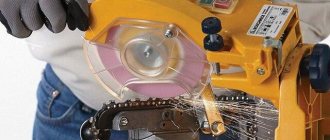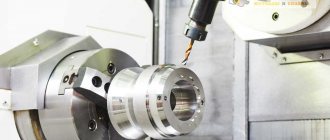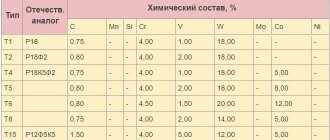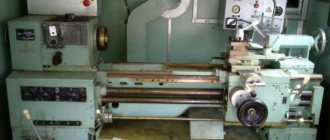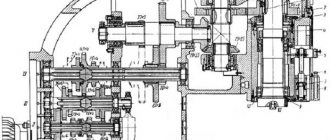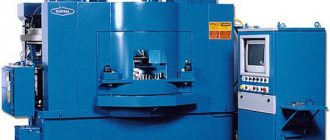CNC equipment capabilities
The production of large batches of complex parts is entrusted to CNC milling and turning-milling machines. Advantages in the operation of the equipment:
- minimum worker employment, just install the workpiece;
- high precision and cleanliness of processing;
- complete production from one installation;
- high performance.
A machine with several tool heads performs all technological operations, replacing automatic lines.
Reference! The only disadvantage of CNC machines is the high cost of programming. Small batches of parts do not cover the costs.
Basic Abilities
Horizontal milling machines can be used not only for processing wood, but also for working with plastic, plexiglass, non-ferrous metals and composites. This tool will work with artificial stone and other materials. Depending on the purpose, as well as a number of design features, several types of tools can be distinguished, namely: fixed, rod, edging and specialized, which are cutting. The latter are intended for drywall, inserting locks, and processing tiles. However, the most common and versatile are submersible movable rod milling devices. In this case, the head of the device moves up and down along guide rods rigidly connected to the support base.
Review of popular models
In the machine park of any enterprise, milling machines make up up to a third of all equipment. Mass production requires CNC equipment; small horizontal milling units are suitable for repairmen and manufacturers of various devices. Most often, experts are interested in the following models.
6T82G
The machine is used for the manufacture of individual parts and in mass production of products. It has a rigid frame and great power. When roughing, cutting speed and feed are higher than similar equipment.
Specifications:
- table area 320×1250 mm;
- longitudinal movement of the table 800 mm;
- lateral movement 320 mm;
- distance from the table to the axis of rotation 30-450 mm;
- spindle speed 1600 rpm;
- The maximum weight of the processed workpiece is 1000 kg.
6T82
The first machines were produced in 1970. Convenient operation, dimensional accuracy and high reliability of the machine are valued by specialists. The model is in demand in home and repair shops for the manufacture of single parts of complex configurations.
Specifications:
- table size 320×2150 mm;
- maximum part weight 250 kg;
- longitudinal movement of the table 800 mm;
- lateral movement 240 mm;
- number of spindle speeds 18.
Cantilever milling machine for metal 6Р13 with CNC
Model with turret head and numerical control. Designed for processing complex-profile parts. The equipment processes tool and high-alloy steels with high hardness. Tool change is performed automatically.
Specifications:
- accuracy class N;
- maximum end mill diameter 40 mm;
- end 125 mm;
- drills 30 mm;
- table size 400×1600 mm;
- spindle speed 18;
- rotation speed 40-2000 rpm;
- number of tools in the head: 6 pcs.
At all enterprises that process metal, wood and other materials, milling machines are in demand. They make parts to replace broken ones, produce various devices and small batches of products.
Compact multifunctional equipment is installed in production. CNC machines produce complex parts according to a program, requiring virtually no operator attention.
Machine setup sequence
When the machine level is set, the equipment should be allowed to stand for at least a day. During this time, the residual metal stress will be removed from the frame and the load will be redistributed. This is followed by the process of checking the alignment of the nodes. The geometric accuracy of the parts specified in the specifications supplied by the manufacturer is measured.
In case of deviations from the specified parameters, additional adjustments are made. To avoid beating during operation, the displacement of the bed level is controlled for various combinations of the location of the spindle assembly and the table with the workpiece. The rotation of the tool itself may be within tolerance, it all depends on the required accuracy of the manufactured parts. On-site modification is required to meet individual customer requirements.
When accepting the machine, pay attention to oil consumption. The manufacturer often overestimates it to prevent jamming when working in conditions other than normal (air temperature from 20 and not higher than 35 degrees, low humidity, low dust content). You should also check the parts supplied and the availability of specified options.
TSGF-50 - analogue of the Korean HS5000
There are more productive horizontal milling machines, the purpose of which is to produce large body parts on an industrial scale. With all the functions and sizes, the equipment is quite compactly located in a small workshop. The machine is equipped with two automatically replaceable tables, manufactured with Japanese precision.
The dynamics of the axes correspond to the latest achievements in machine tool construction. DC motors ensure uniform movement of the axes, and positioning can reach 0.01 microns thanks to the rulers of the manufacturer Heidenhain. Sliding axes ensure uniform movement and are able to withstand large mechanical loads.
An automatic tool changer is also built into the machine body. Engineers have thought out safe recovery from emergency situations in a semi-automatic mode using M-codes, which eliminates damage to the structure due to operator errors.
Main technical characteristics
If you are interested in horizontal milling machines, then it is important to pay special attention to the electrical component. The head part is a motor with handles, as well as a collet clamp. Power consumption can indicate the performance of the appliance. If there are more watts under the housing, then the device is equipped with a larger cutter, which allows for fast feed and deep passage without overheating the windings. But high power can cause an increase in the weight of the unit and its size. Among other things, impressive torque may not co-exist correctly in tandem with delicate equipment. Based on this characteristic, a horizontal milling machine can belong to one of the classes. If we are talking about light devices, then their power does not exceed 700 watts, for medium-sized models this parameter varies from 700 to 1500 watts, but for professional options that are heavy, the power may be more than 1500 watts. A number of manufacturers do not use technologies in the production process that would involve the production of lightweight tools. They offer for sale devices with a power equivalent to 2.3 kilowatts. The cutting depth of such devices can be 70 centimeters, and the weight reaches 6.1 kilograms. Among other characteristics of such devices, one can highlight an impressive number of revolutions per minute, which can be 22,000, while the collet size will be equal to 12 millimeters. If we compare, a desktop horizontal milling machine with a power of 900 watts weighs half as much, and the processing depth is reduced to 57 millimeters.
Similar equipment
The universal horizontal milling machine brand KH40G from the Troitsk plant is an analogue of the above models. The design has two replaceable tables on which dimensional parts are fixed. The spindle assembly has three axes: vertical and two horizontal. The table also has an axis for changing pallets.
The machine is controlled by a low-maintenance and reliable Fanuc CNC system; it is possible to implement it based on Sinumerik, but this significantly increases the cost of the equipment. The tables have excellent geometry and are supplied from Japan.
The machine has compact dimensions, weight and the ability to install additional options. The cooling system is located under the working volume, which allows the liquid to circulate in a closed cycle. To power the machine, air and a 3-phase electrical connection are required.
